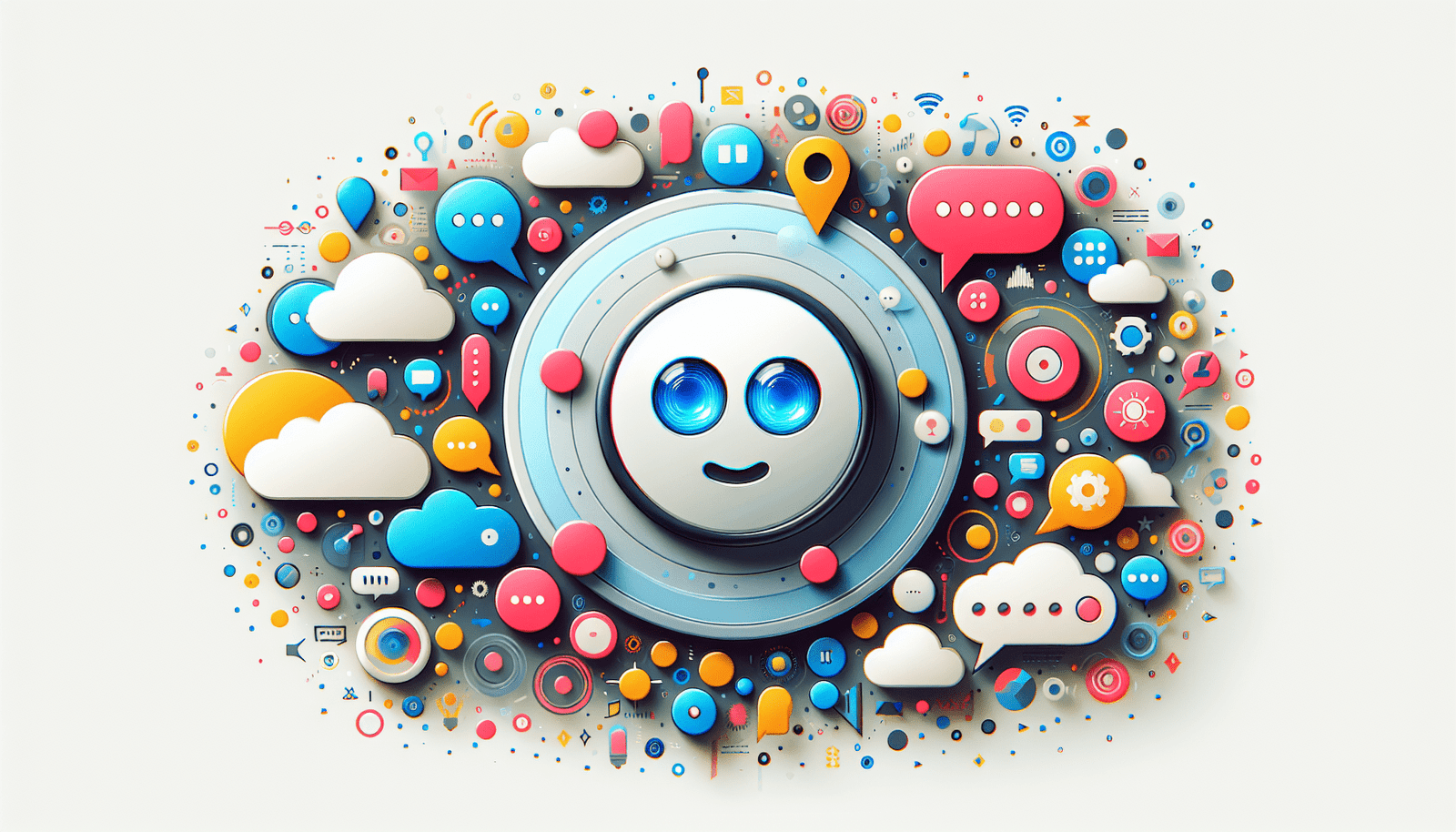Product Usage Trends And Statistics
Are you curious about the latest product usage trends and statistics? In this article, we will explore the fascinating world of consumer behavior and shed light on the latest insights and data. From the rise of online shopping to the growing demand for sustainable products, we will uncover the key trends shaping the market and understand the factors driving these changes. So, grab a cup of coffee and get ready to dive into the exciting realm of product usage trends and statistics!
1. Global Product Usage Trends
1.1 Growing adoption of smart devices
The global market for smart devices, such as smartphones, tablets, and smartwatches, has witnessed significant growth in recent years. This can be attributed to the increasing accessibility and affordability of these devices, as well as the advancements in technology that have enhanced their functionality. Smart devices have become an integral part of our lives, allowing us to connect with others, access information, and perform various tasks with ease. As a result, the demand for products that are compatible with these devices, such as apps and accessories, has also increased.
1.2 Increasing demand for e-commerce
E-commerce has revolutionized the way people shop, providing them with convenience, choice, and competitive prices. The global pandemic has further accelerated the growth of e-commerce as more people turned to online shopping to meet their needs. The ease of browsing and purchasing products online, coupled with the availability of fast and reliable delivery services, has made e-commerce a preferred choice for many consumers. This trend is expected to continue as more individuals embrace the convenience and benefits of online shopping.
1.3 Rise of subscription-based services
Subscription-based services have become increasingly popular across various industries, including entertainment, software, and food delivery. These services offer consumers the convenience of accessing products or services on a recurring basis, often at a discounted price. From streaming platforms like Netflix and Spotify to meal kit subscriptions like HelloFresh, subscriptions have gained traction due to their convenience and personalized experiences. The subscription model provides businesses with a stable and predictable revenue stream while offering consumers a hassle-free way to enjoy their favorite products or services.
2. Demographic Patterns in Product Usage
2.1 Age-specific product preferences
Different age groups have distinct preferences when it comes to product usage. For example, younger generations such as Generation Z and millennials are more likely to embrace new technologies and digital products. They are heavy users of smartphones, social media platforms, and streaming services. On the other hand, older demographics, such as baby boomers and Generation X, tend to have different priorities and preferences. They may prefer more traditional products and have different usage patterns.
2.2 Gender-based variations in usage
Gender also plays a role in product usage patterns. Certain products and industries are more popular among men, while others appeal more to women. For instance, technology products like gaming consoles and gadgets are often associated with male consumers. Meanwhile, beauty and fashion products tend to target female consumers. However, it is important to note that these gender-based variations are not absolute, and there is a growing trend of gender-neutral products that cater to a wider audience.
2.3 Regional variations in product choices
Product choices and preferences can also vary based on geographical regions. Cultural factors, economic conditions, and lifestyle differences influence the products that people in different regions prefer to use. For example, in developed countries, consumers may have access to a wider range of products and technologies, while in developing countries, the availability of certain products may be limited. Local traditions, customs, and preferences also shape the product usage trends within specific regions.
3. Product Usage by Industry
3.1 Technology and electronics
The technology and electronics industry has been at the forefront of product innovation and change. With the constant evolution of smartphones, laptops, and other electronic devices, consumers are increasingly dependent on these products for communication, entertainment, and work purposes. The demand for cutting-edge technology and advanced features has led to a highly competitive market, with companies constantly striving to differentiate themselves and capture consumer interest.
3.2 Food and beverages
The food and beverages industry has also witnessed notable product usage trends. Consumers are becoming more conscious of their food choices, with an increasing focus on health and sustainability. This has led to a rise in demand for organic, natural, and locally sourced products. Additionally, the popularity of meal kit services and food delivery apps has grown significantly, providing consumers with convenient options for meal planning and dining.
3.3 Fashion and apparel
Fashion and apparel products are heavily influenced by changing trends and consumer preferences. The rise of fast fashion has led to a higher turnover of clothing items, as consumers seek to stay on top of the latest styles. However, there is also a growing movement towards sustainable fashion, with consumers opting for eco-friendly materials and ethical production practices. Online shopping has further revolutionized the fashion industry, making it easier for consumers to access a wide variety of clothing and accessories.
4. Product Usage across Generations
4.1 Baby Boomers’ impact on product trends
Baby boomers, born between 1946 and 1964, have a significant impact on product trends due to their sheer numbers and buying power. This demographic is known for their preference for more traditional products and services. However, as they continue to embrace technology and adapt to changing trends, their product usage patterns are evolving. Baby boomers are increasingly using smartphones, tablets, and social media platforms to connect with family and friends, access information, and shop online. This presents opportunities for businesses to cater to their unique needs and preferences.
4.2 Generation X preferences
Generation X, born between 1965 and 1980, are known for their independence and skepticism. They value convenience, efficiency, and quality when it comes to product usage. Generation X consumers are more likely to research products and read reviews before making a purchase. They also tend to be early adopters of new technologies and are willing to invest in products that enhance their productivity and lifestyle.
4.3 Millennials and their influence
Millennials, born between 1981 and 1996, are the largest consumer segment in many markets. Their product usage patterns have been shaped by their digital upbringing and desire for convenience. Millennials are heavy users of smartphones, social media platforms, and streaming services. They value experiences and are more likely to spend on travel, dining out, and unique products or services. As a highly influential generation, their preferences and demands have driven product innovation and changed the way businesses operate.
5. Impact of Social Media on Product Usage
5.1 Effects of influencer marketing campaigns
Social media platforms have become powerful tools for product promotion, thanks to the rise of influencer marketing campaigns. Influencers, individuals with a large following on social media, have the ability to sway consumer opinions and influence purchase decisions. By partnering with influencers, brands can reach a wider audience and build trust and credibility. Influencer marketing has become an integral part of product launches, with influencers endorsing and recommending products to their followers.
5.2 Social media as a platform for product discovery
Social media platforms, such as Instagram and Pinterest, have transformed into popular channels for product discovery. Consumers can find inspiration and explore new products or brands through visually appealing content. The ease of sharing and tagging products has made it easier for users to discover and purchase items directly from their social media feeds. Businesses have recognized the power of social media as a product discovery platform and have optimized their presence on these platforms to capitalize on this trend.
5.3 User-generated content’s role in product promotion
User-generated content, created and shared by consumers, has become a valuable asset for product promotion. Reviews, ratings, and testimonials posted by consumers on social media platforms, review sites, and online marketplaces influence the purchase decisions of others. User-generated content provides an authentic and unbiased perspective on products, allowing potential buyers to make more informed choices. Businesses are incorporating user-generated content into their marketing strategies to build brand loyalty and trust.
6. Emerging Technologies Shaping Product Usage
6.1 Internet of Things (IoT) integration in products
The Internet of Things (IoT) has revolutionized product usage by enabling devices to connect and communicate with one another. IoT integration has expanded the capabilities of various products, from smart home devices to wearables. Consumers can control and monitor their devices remotely, enhancing convenience and automation. For example, smart thermostats can adjust the temperature based on occupancy, and fitness trackers can collect and analyze health data. The IoT has opened up new possibilities for personalized and interconnected product experiences.
6.2 Artificial Intelligence (AI) and product personalization
Artificial Intelligence (AI) has rapidly advanced and is transforming the way products are used and personalized. AI-powered algorithms analyze user data to deliver personalized recommendations, improve user experiences, and automate tasks. Virtual assistants like Amazon’s Alexa and Apple’s Siri have become commonplace, allowing users to control devices and access information through voice commands. AI also plays a significant role in chatbots, customer service, and product recommendations, tailoring experiences to individual preferences.
6.3 Virtual Reality (VR) enhancing customer experiences
Virtual Reality (VR) technology has begun to shape product usage by immersing users in virtual environments. Industries such as gaming, tourism, and retail have capitalized on VR to provide customers with unique and engaging experiences. With VR headsets, users can explore virtual worlds, try on virtual clothing, or tour virtual real estate. This technology has the potential to revolutionize product demonstrations, training, and entertainment, creating a new dimension of user experiences.
7. Factors Driving Product Usage Changes
7.1 Change in consumer lifestyles
Consumer lifestyles are constantly evolving, driven by societal, economic, and technological changes. Shifts in work patterns, increased mobility, and changing social norms all influence the way products are used. For example, the rise of remote work has led to a greater reliance on technology and virtual collaboration tools. As consumers adopt new lifestyles, their product usage habits adapt accordingly, creating opportunities for businesses to innovate and cater to changing needs.
7.2 Technological advancements
Technological advancements play a significant role in driving product usage changes. New technologies enable the development of innovative products and services that disrupt traditional industries and change consumer behavior. For instance, the introduction of electric vehicles has reshaped the transportation industry, and the advent of streaming platforms has transformed the entertainment landscape. As technology continues to evolve, it will continue to shape the way products are used and consumed.
7.3 Environmental concerns
Growing environmental concerns have also influenced product usage trends. Consumers are becoming more conscious of the ecological impact of their purchases and are seeking sustainable alternatives. This has led to a rise in demand for eco-friendly products, such as reusable or biodegradable materials. Businesses are responding to these concerns by focusing on sustainable practices, reducing waste, and offering environmentally friendly options. The shift towards sustainable consumption is expected to drive further changes in product usage patterns.
8. Product Usage and Sustainable Consumption
8.1 Growing demand for eco-friendly products
As consumers become more environmentally conscious, there is a growing demand for eco-friendly products. This includes products made from sustainable materials, products with low carbon footprints, and products that prioritize recyclability and reusability. From reusable shopping bags to energy-efficient appliances, businesses are responding to this demand by offering a wider range of eco-friendly options. Sustainable product usage not only benefits the environment but also aligns with consumer values and preferences.
8.2 Ethical consumerism and product choices
Ethical consumerism has gained traction as consumers prioritize purchasing products that align with their values and support socially responsible practices. This includes factors such as fair trade, ethical sourcing, and cruelty-free production. Consumers are increasingly scrutinizing product supply chains and company practices to ensure they meet ethical standards. Businesses that prioritize social and environmental responsibility in their product offerings are more likely to resonate with consumers and build brand loyalty.
8.3 Recycling and product life cycle management
The importance of recycling and product life cycle management has become increasingly evident. Consumers expect businesses to take responsibility for the entire life cycle of their products, from sourcing materials to end-of-life disposal. Companies are implementing recycling programs, offering take-back initiatives, and designing products with recyclability in mind. By addressing the sustainability aspect of product usage, businesses can contribute to circular economy practices and reduce waste.
9. Product Usage Trends in Developing vs. Developed Countries
9.1 Differences in access to technology
Product usage trends can differ significantly between developing and developed countries due to variations in technology accessibility. Developed countries often have advanced infrastructure and widespread internet connectivity, allowing consumers to access a wide range of products and services. In contrast, developing countries may face constraints such as limited internet access, lower smartphone penetration rates, and infrastructure challenges. As technology becomes more accessible in developing countries, product usage patterns are likely to evolve and align with global trends.
9.2 Varying consumer behaviors and preferences
Consumer behaviors and preferences can also vary between developing and developed countries. Factors such as cultural norms, economic conditions, and lifestyle differences shape product usage trends. For example, in some developing countries, traditional shopping practices and local markets still dominate, while in developed countries, e-commerce has become more prominent. The cultural context and consumer preferences within each country play a significant role in determining product usage patterns.
9.3 Influence of cultural and economic factors
Cultural and economic factors heavily influence product usage trends in both developing and developed countries. Cultural values, traditions, and social norms can shape consumer preferences and influence the types of products that are popular. Economic factors, such as income levels and purchasing power, also play a crucial role in product usage patterns. Understanding the cultural and economic dynamics within a specific country or region is crucial for businesses seeking to enter new markets and cater to local consumer needs.
10. Product Usage Habit Changes Post-Pandemic
10.1 Shift towards remote work and virtual collaboration tools
The COVID-19 pandemic has forced many organizations to adopt remote work policies and rely on virtual collaboration tools. This shift has resulted in an increased dependence on technology products and services that enable effective remote work and communication. Video conferencing platforms, project management tools, and cloud-based services have seen a surge in demand. The pandemic has accelerated the acceptance of remote work and is likely to have a lasting impact on product usage habits in the post-pandemic era.
10.2 Increase in online shopping and contactless deliveries
As people turned to online shopping during lockdowns and social distancing measures, there has been a significant increase in e-commerce and contactless deliveries. Consumers have embraced the convenience and safety offered by online shopping platforms and have developed new habits. This shift towards online shopping is expected to continue even after the pandemic subsides, as consumers have realized the benefits and convenience associated with it.
10.3 Emphasis on health and hygiene-related products
The pandemic has created a heightened awareness and emphasis on health and hygiene. As a result, there has been an increased demand for products such as sanitizers, disinfectants, and personal protective equipment (PPE). Consumers are likely to continue prioritizing health and hygiene products even in the post-pandemic world. Businesses catering to these needs will witness sustained demand and a shift in product usage patterns.
In conclusion, product usage trends are influenced by various factors such as technological advancements, changing consumer preferences, and global events like the COVID-19 pandemic. Understanding these trends is essential for businesses to stay competitive and meet the evolving needs of their target audience. Whether it is the growing adoption of smart devices, the rise of subscription-based services, or the impact of social media on product promotion, businesses must adapt to these changes to thrive in today’s dynamic market.





